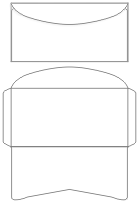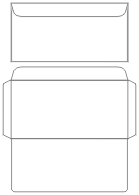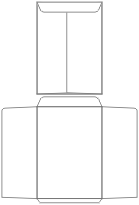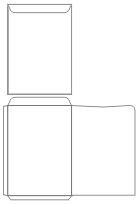An envelope is a packaging product typically made from flat materials such as paper or cardboard. It is designed to hold flat objects, commonly letters, cards, or bills, especially in the context of postal services. Traditional envelopes are crafted from a sheet of paper cut into one of three shapes: a rhombus (also known as a lozenge or diamond), a short-arm cross, or a kite. These specific designs ensure that when the sides of the sheet are folded around a central rectangular area during the manufacturing process, a rectangular, usually oblong, enclosure is formed. This results in an arrangement of four flaps on the reverse side, which, due to the traditional shapes used, creates a symmetrical appearance.
The rhombus shape, often referred to as a lozenge or diamond, is particularly efficient in creating an envelope with evenly aligned flaps, which can be sealed easily. The short-arm cross and kite shapes also provide the same functional benefits, ensuring that the final product is both practical and aesthetically pleasing. Envelopes can be made in various sizes and can include additional features such as windows, adhesive strips, or security patterns to protect the contents.
Modern envelope production has expanded beyond traditional shapes to include custom sizes and designs tailored to specific needs. Advanced printing techniques allow for full-color printing and a range of finishes, including lamination, UV coating, hot stamping, and embossing, which enhance both the appearance and durability of the envelope. Whether for personal use, business correspondence, or marketing purposes, envelopes play a crucial role in securely delivering documents while maintaining a professional presentation.













